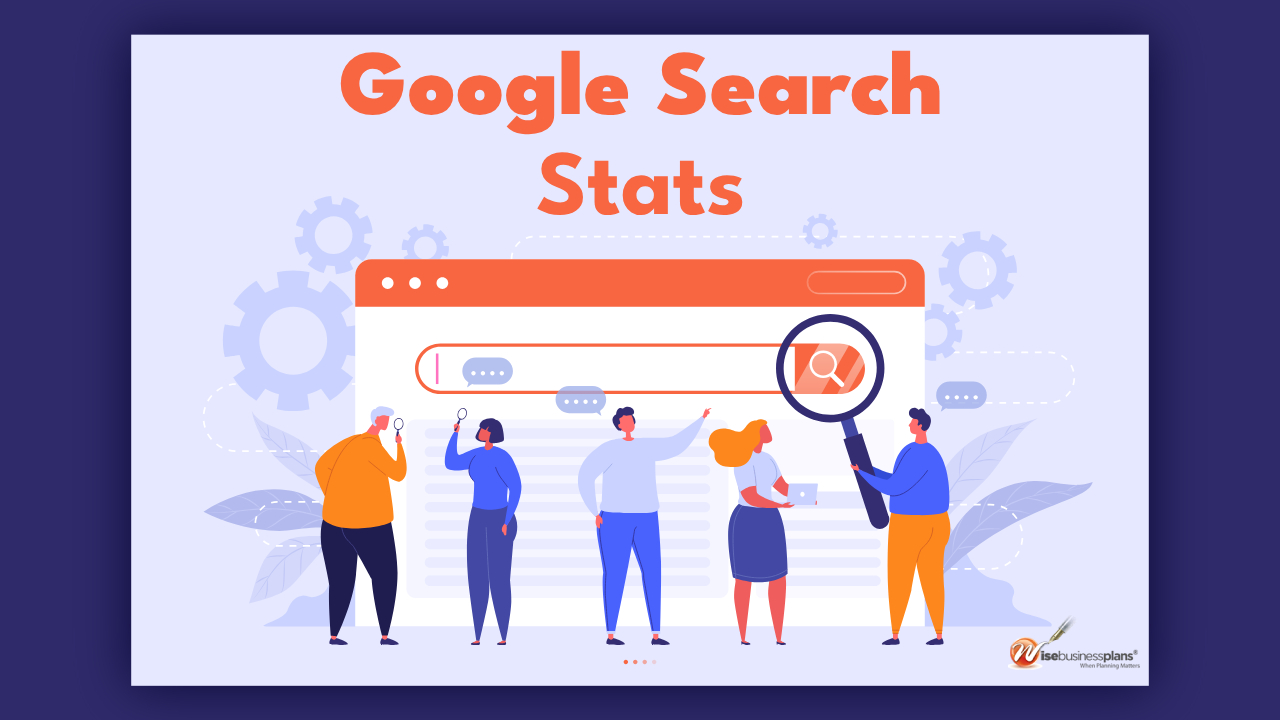Google Search Statistics for 2024: Trends and Insights for Businesses
Table of Contents
- Total Google Searches Per Day
- Mobile Search Dominance
- Voice Search on the Rise
- Featured Snippets
- “Elevate Your Digital Marketing Game”!
- Zero-Click Searches
- Local Search Importance
- Video Content on the Rise
- Long-Form Content Performs
- Mobile Page Speed
- Unlock the Future of Marketing with Google Search Stats!
- Structured Data Markup
- User Experience Matters
- Content Quality vs. Quantity
- Conclusion
- Personal Review
In the ever-evolving landscape of digital marketing, staying informed about the latest trends and statistics is crucial. Google Search, the world’s largest search engine, plays a pivotal role in the online marketing sphere.
In this blog post, we’ll look at 12 key Google search statistics for marketers in 2024, giving you an understanding of the trends and insights that can shape your marketing strategies.
Understanding these statistics is invaluable for marketers as it empowers them to enhance their SEO strategies, create more effective and targeted content, and ultimately reach a wider and more engaged audience.
Total Google Searches Per Day
Google processes a record-breaking 5.6 billion searches daily, showcasing its unparalleled strength as a marketing platform. This statistic underscores the importance of optimizing your website’s visibility on Google.
It’s not just about the quantity but also the diversity of responses. Marketers should conduct thorough keyword research to understand what users are searching for and create content that aligns with those search terms.
Additionally, considering the global nature of Google, this statistic highlights the potential for international marketing efforts to reach a vast and diverse audience.
Mobile Search Dominance
With mobile devices accounting for 56% of all Google searches, the significance of mobile optimization cannot be overstated. Beyond just having a mobile-friendly website, marketers need to ensure that their content is responsive, loads quickly on mobile devices, and offers an excellent user experience.
Google’s mobile-first indexing means that the mobile version of your site is considered the primary source for ranking and indexing, making mobile SEO a top priority for marketers. Moreover, it’s crucial to incorporate long-tail keywords into your content, as these are more likely to be used in voice searches, aligning your strategy with the growing trend of voice search.
Voice Search on the Rise
The rise of voice search, with 27% of the global online population using it on mobile, indicates a shift in user behavior. Marketers should adapt their SEO strategies to accommodate conversational queries and long-tail keywords. Creating content that answers voice search queries concisely and provides valuable information is key. Moreover, as voice search is often localized, optimizing for local SEO can help capture voice search traffic with location-specific keywords.
Featured Snippets
With approximately 12% of Google searches displaying featured snippets, marketers should do all they can to secure this prime real estate in search results. To achieve this, content should directly address common user queries in a clear, concise manner.
Additionally, it’s vital to structure your content effectively, using clear headings and subheadings, as well as presenting important information in bullet points or numbered lists.
This structured approach not only increases the chances of Google selecting your content for featured snippets but also makes it easy for Google to understand, enhancing your overall visibility and the authority and respectability of your site.
Zero-Click Searches
Zero-click searches are increasingly common, with over half of all searches falling into this category. For marketers, this means focusing on making your search results stand out with compelling meta descriptions, schema markup, and attractive titles.
Additionally, it’s crucial to leverage rich snippets in your search results, which can include additional information like star ratings, prices, and event dates. These rich snippets make your listings more informative and appealing, enticing people to click through to your website. To maximize your online presence, monitor your site’s performance in the Google Search Console to understand which queries are leading to zero-click searches and optimize your content accordingly.
Local Search Importance
The prominence of local intent in over 46% of Google search statistics highlights the significance of local SEO for businesses. To bolster your local SEO efforts, it’s essential to claim and verify your Google My Business listing. This simple yet crucial step ensures that your business shows up prominently in local search results.
Additionally, make sure your listing contains accurate information, and actively encourage customer reviews. Incorporating location-based keywords and creating localized content can further enhance your business’s visibility, driving both foot traffic and online conversions.
Video Content on the Rise
Video searches, accounting for 25% of all Google searches, underscore the growing popularity of video as a content format. To harness the potential of this trend, marketers should prioritize optimizing their videos for search.
This involves using relevant keywords strategically in video titles, descriptions, and tags. By doing so, your video content becomes more discoverable to users searching for related topics.
Additionally, consider promoting your video content through platforms like YouTube and social media to broaden your reach and engage with a wider audience effectively.
Long-Form Content Performs
The data revealing that long-form content (1,000 words or more) garners more backlinks and shares emphasizes the significance of depth and expertise in your content.
When creating long-form articles, it’s essential to thoroughly explore topics, provide valuable insights, and establish authority in your niche. However, it’s equally crucial to ensure reader engagement by adopting a well-structured format that includes clear headings, subheadings, and relevant images.
These elements help break up the content into smaller, digestible chunks, making it easier for readers to scan and absorb the information effectively.
Mobile Page Speed
Google’s mobile page speed update highlights the critical importance of a fast-loading website for SEO success. Mobile users have come to expect swift access to information, and a slow-loading website can lead to increased bounce rates and lower search engine rankings.
To address this, marketers should prioritize optimizing mobile page speed by implementing strategies such as image compression, code minimization, and the utilization of content delivery networks (CDNs) to ensure rapid loading times on mobile devices.
Additionally, it’s highly advisable to use a mobile-friendly testing tool to regularly assess and fine-tune your website’s speed performance on mobile devices. This proactive approach helps ensure a seamless user experience and favorable search engine rankings.
Structured Data Markup
Implementing structured data markup (schema markup) on your website offers Google valuable context about your content. This can potentially result in enhanced search results, including the display of rich snippets, which have the potential to significantly improve click-through rates.
For marketers, harnessing structured data is a powerful strategy as it can transform your listings into more informative and visually appealing search results, ultimately driving increased organic traffic to your site.
To ensure the correctness of your schema markup and its alignment with Google’s guidelines, it is highly advisable to utilize the Google Structured Data Testing Tool for validation.
This tool helps guarantee that your structured data is correctly implemented, enhancing your chances of reaping the benefits of rich snippets and improved search visibility.
User Experience Matters
With Google’s Page Experience Update giving due consideration to Core Web Vitals, ensuring a seamless and enjoyable user experience is of utmost importance.
Marketers should place a strong focus on optimizing crucial aspects such as page load times, interactivity, and visual stability. By enhancing the user experience, not only can you expect improved search rankings, but you’ll also have the opportunity to keep visitors engaged on your site.
To effectively gauge user engagement and identify areas for improvement, it’s valuable to utilize tools like Google Analytics. This will enable you to track important metrics, including the bounce rate, providing insights into how users interact with your website and helping you make informed refinements to enhance user experience further.
Content Quality vs. Quantity
Quality is undeniably a cornerstone of successful SEO. Beyond the sheer volume of content produced, the quality of that content holds equal importance.
It must be meticulously researched, loaded with valuable information, and highly relevant to your target audience. Such high-quality content doesn’t merely contribute to increased organic traffic; it also actively encourages user interaction.
Furthermore, it becomes a catalyst for social media sharing and garners those precious backlinks that are fundamental for SEO success. To maximize the reach and impact of your high-quality content, don’t underestimate the power of promoting it through various online channels, including social media.
Sharing your content strategically across these platforms can significantly amplify its visibility and engagement, ultimately benefiting your SEO efforts.
Conclusion
In 2024, Google Search will continue to be a fast-growing and valuable tool for marketers. Understanding these Google search statistics is vital for crafting effective digital marketing strategies. Marketers should prioritize mobile optimization, voice search readiness, local SEO, and user experience. It is also impossible to overstate the importance of valuable, high-quality content. By aligning your strategies with these statistics, you can take advantage of the huge potential of Google Search for your marketing success. Stay informed, adapt, and grow in the ever-changing digital landscape.
Personal Review
I’ve learned from my experience as a digital marketer that in 2024, Google Search will be a powerhouse, processing a record-breaking 5.6 billion searches daily. I have learned how crucial it is to optimize websites for mobile, given that mobile devices account for 56% of all searches.
Moreover, the rise of voice search, with about 27% of users relying on it, has prompted me to craft content that answers voice queries naturally. I’ve also noticed that creating user-friendly website descriptions and structured data is essential, as more than half of searches don’t result in a website click.
These statistics, in my opinion, are crucial in determining how well a website performs in Google Search.




![How to Implement Security Measures That Actually Protect Your Business [Step-by-Step Guide]](https://wisebusinessplans.com/wp-content/uploads/2025/06/how-to-implement-security-measures-that-actually-protect-your-business-1024x576.webp)











